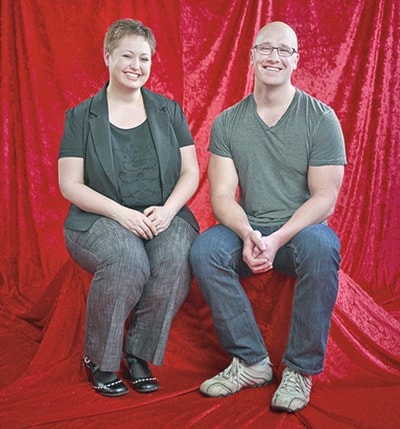A new smart phone app that provides step-by-step instructions for treating cardiac arrest victims has been welcomed by Dustin and Kristelle Heinrichs of Abbotsford.
Twenty-eight-year-old Dustin Heinrichs was fit, a weightlifter and a competitive cyclist with a heart condition called Wolff-Parkinson-White (WPW) syndrome that doctors felt wouldn’t affect his active lifestyle.
Then one morning, while he was sleeping, his heart stopped beating.
His body went rigid, waking Kristelle, who has first aid training and recognized it was sudden cardiac arrest, called 911 and started CPR.
“He had no pulse,” she said.
The ambulance arrived in six minutes, and it took another 25 to get Dustin’s heart beating again.
He came to in hospital after 36 hours in a medically induced coma, wondering what had happened.
It turned out he had another, undiagnosed heart problem – atrial fibrillation.
Combined with WPW, it was what one doctor described as “sudden death waiting to happen.”
Six years later, Dustin has an implantable cardioveter defibrillator (ICD) and has been able to maintain a physically active lifestyle.
“We’re very grateful,” Kristelle said.
The couple said the value of the free Cardiac Arrest Action App from the Heart and Stroke Foundation is that it gives people easy-to-follow directions and an opportunity to rehearse.
“This app is giving people a second lease on life,” Dustin said.
“It creates awareness. It saves lives.”
The app runs on iPhones and Android devices and can be downloaded from iTunes and Google.
Unlike a heart attack, which has warning signs and symptoms and can often be treated at the hospital, cardiac arrest is a failure of the heart’s electrical system, when the heart suddenly stops beating and the person collapses.
